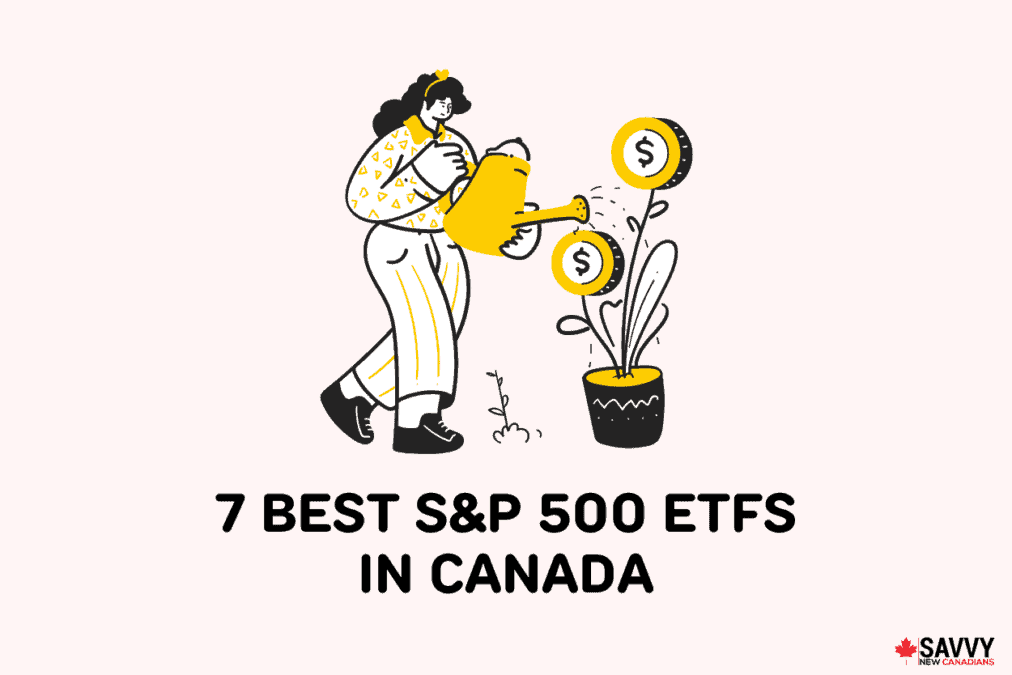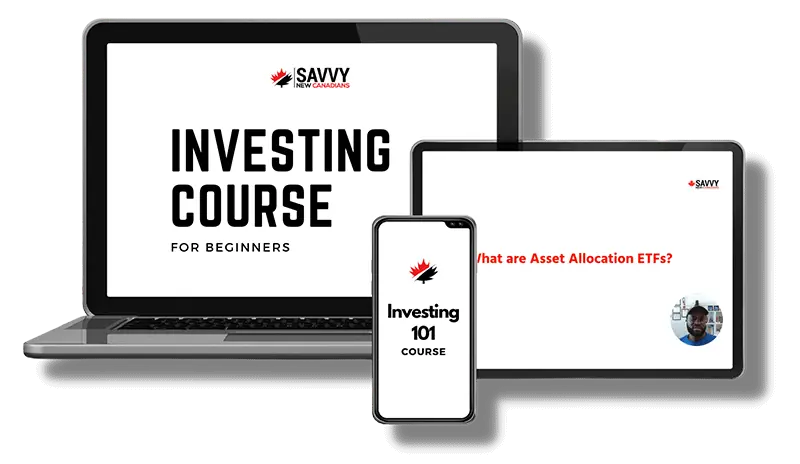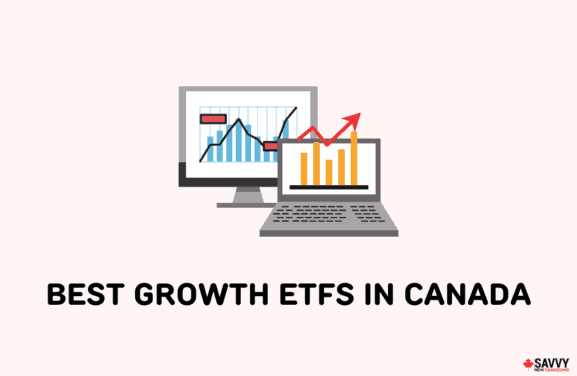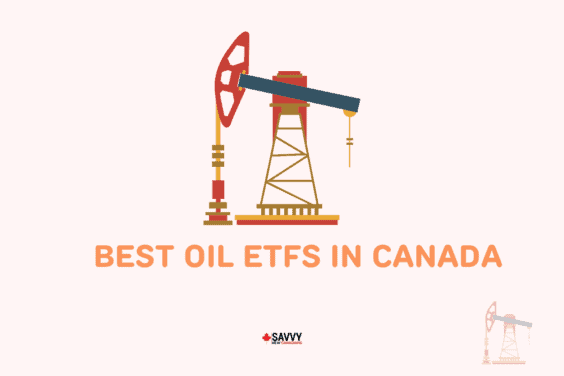The S&P 500 is the benchmark US equity index that holds 500 of the largest publicly traded American companies.
This index was established in March of 1957 by the statistics and publishing company Standard and Poor’s.
Investing in Exchange Traded Funds (ETFs) that track the S&P 500 is an excellent way to own diversified exposure to the US equities market.
Canadian investors can invest in the S&P 500 via a Canadian dollar-denominated ETF that trades on the TSX, or they can also invest in US-domiciled ETFs that trade in US dollars.
In this article, I will cover the 7 best S&P 500 ETFs in Canada for 2024, where to buy them, and why they make a great addition to any diversified portfolio.
Best Canadian S&P 500 ETFs to Buy in 2024
Vanguard Canada S&P 500 Index ETF
- Ticker symbol: VFV
- MER: 0.09%
- Number of Holdings: 505
- 5-year average annual return: 11.65%
- Issuer: Vanguard Canada
- Assets under management: $7.87 billion
- Distribution frequency: Quarterly
- Distribution yield: 1.30%
- 12-month trailing yield: 1.28%
- Inception date: November 02, 2012
VFV is the Vanguard Canada S&P 500 Index, established in 2012. It trades on the Toronto Stock Exchange and is one of the best all-around Canadian ETFs.
It directly exposes Canadian investors to the S&P 500 but is denominated in Canadian dollars.
With nearly $8 billion in AUM, it is one of the largest ETFs in Canada and one of the most popular Vanguard ETFs.
The 0.09% MER for VFV.TO is among the lowest in the industry and is one of the cheapest ways Canadian investors can own US-domiciled stocks.
Vanguard S&P 500 index ETF (CAD-Hedged)
- Ticker symbol: VSP
- MER: 0.09%
- Number of Holdings: 505
- 5-year average annual return: 9.27%
- Issuer: Vanguard Canada
- Assets under management: $2.91 billion
- Distribution frequency: Quarterly
- Distribution yield: 1.26%
- 12-month trailing yield: 1.32%
- Inception date: November 02, 2012
VSP is identical to the VFV ETF from Vanguard Canada, except that it is hedged with the Canadian dollar. This allows the ETF to hedge against any currency risks for Canadian investors.
Historically, VSP.TO has provided slightly lower returns than its non-hedged counterpart in VFV.
VSP has the same MER as VFV but pays out a slightly lower annualized distribution yield. Learn more about it in this review.
BMO S&P 500 Index ETF
- Ticker symbol: ZSP
- MER: 0.09%
- Number of Holdings: 504
- Number of Holdings: 505
- 5-year average annual return: 11.64%
- Issuer: BMO Global Asset Management
- Assets under management: $9.34 billion
- Distribution frequency: Quarterly
- Distribution yield: 1.46%
- 12-month trailing yield: N/A
- Inception date: November 14, 2012
ZSP.TO is the S&P 500 Index ETF from BMO Global Asset Management that trades on the Toronto Stock Exchange. This ETF has the same MER as VFV and VSP but pays out a slightly higher distribution yield of 1.46%.
It has a medium risk rating and is eligible for all registered and non-registered accounts for Canadian investors.
Like VFV, ZSP also has a CAD-hedged version of its ETF, which trades as the BMO S&P 500 Hedged to CAD Index ETF (ZUE).

Horizons S&P 500 Index ETF
- Ticker symbol: HXS.U.TO
- MER: 0.10%
- Number of Holdings: 505
- 5-year average annual return: 10.56%
- Issuer: Horizons ETFs
- Assets under management: $2.573 billion
- Distribution frequency: N/A
- Distribution yield: N/A
- 12-month trailing yield: N/A
- Inception date: November 30, 2010
HXS.U.TO is the sibling ETF to the Horizons S&P 500 Index ETF (HXS.TO).
The two funds share the ticker symbol HXS on the TSX. What is the primary difference? HXS.U.TO is denominated in US dollars, while HXS.TO is in Canadian dollars.
It also has a hedged version of the ETF that trades as the S&P 500 CAD Hedged Index ETF (HSH.TO), which also trades on the TSX.
One thing to note about HSX.U.TO and HSX.TO is that they do not pay out quarterly distributions, which can be a negative for some investors. It is eligible to be traded in all registered and non-registered accounts for Canadian investors.
- Ticker symbol: XUS
- MER: 0.10%
- Number of Holdings: 503
- 5-year average annual return: 11.63%
- Issuer: Blackrock iShares
- Assets under management: $4.9 billion
- Distribution frequency: Semi-Annual
- Distribution yield: 1.49%
- 12-month trailing yield: 1.22%
- Inception date: April 10, 2013
XUS is an S&P 500 Index ETF in Canada issued by Blackrock iShares and trades on the Toronto Stock Exchange.
One distinguishing feature of XUS compared to its peers is that it pays its distributions on a semi-annual basis, compared to quarterly.
This iShares ETF also has a CAD-hedged version called the iShares Core S&P 500 Index ETF (CAD-Hedged) and trades on the TSX under the ticker symbol XSP.TO.
Both XUS and XSP are eligible for all registered and non-registered accounts for Canadian investors.
Top US-Listed S&P 500 ETFs
State Street SPDR S&P 500 ETF Trust
- Ticker symbol: SPY
- MER: 0.09%
- Number of Holdings: 503
- 5-year average annual return: 10.87%
- Issuer: State Street Global Advisors
- Assets under management: $413 billion USD
- Distribution frequency: Quarterly
- Distribution yield: 1.57%
- 12-month trailing yield: N/A
- Inception date: January 22, 1993
SPY is one of the largest ETFs in the world and trades on the US-domiciled NYSEARCA index in US dollars.
With an inception date of January 1993, it is credited as being the very first ETF ever to be listed in the United States.
Canadian investors can invest in US-domiciled ETFs like SPY in their RRSPs without reducing distribution yields via the 15% foreign withholding taxes. This 15% tax will apply to any distributions in a TFSA, though, so be sure to choose your account wisely if you invest in SPY.
Vanguard S&P 500 ETF
- Ticker symbol: VOO
- MER: 0.03%
- Number of Holdings: 505
- 5-year average annual return: 10.97%
- Issuer: Vanguard
- Assets under management: $316 billion USD
- Distribution frequency: Quarterly
- Distribution yield: 1.57%
- 12-month trailing yield: N/A
- Inception date: September 7, 2010
VOO is Vanguard’s US-domiciled S&P 500 Index that trades on the NYSEARCA index in US dollars.
This ETF is known as one of the lowest MERs in the industry, with just a 0.03% fee for holding shares. This means that for every $10,000 invested in VOO, the annual fee is just $3.00.
It can be held in a registered account like an RRSP, and Canadian investors will not have to pay the 15% foreign withholding taxes. This is not the case in unregistered accounts like a TFSA.
What is the S&P 500 Index?
The S&P 500 is the most widely tracked index in the world and is a barometer of the health and strength of the US stock market.
Since 1957, the S&P 500 has provided an average annual return of about 10.5% to investors.
It is a free-float weighted and market-capitalization-weighted index. This means that the companies with the largest market caps hold the largest allocations in the index.
The top ten companies account for about 30% of the total market capitalization of the index. Not surprisingly, Apple, Microsoft, Amazon, NVIDIA, and Alphabet account for the highest weighted holdings.
How to Invest in S&P 500 ETFs in Canada
Canadian investors that are looking to invest in the S&P 500 can easily do so through some of Canada’s most popular discount brokerages.
Questrade
Questrade is the largest and oldest discount brokerage in Canada that offers its highly-rated platform for both desktop and mobile versions.
This site allows Canadian investors to buy ETFs for free but does charge a $4.95 fee when ETFs are sold.
Questrade

Trade stocks, ETFs, options, FX, bonds, CFDs, mutual funds, etc.
Get $50 trade credit with $1,000 funding
Low and competitive trading fees
No quarterly inactivity fees
Access to advanced tools and trading data
Top platform for advanced traders
Transfer fees waived
Wealthsimple Trade
Wealthsimple Trade is the stock trading segment of the popular Wealthsimple financial services platform established in 2014.
This platform has gained popularity amongst Canadian investors due to its zero-commission trading for stocks and ETFs.
Wealthsimple Trade

Trade stocks, ETFs, and options
Excellent trading platform for beginners
Deposit $150+ to get a $25 cash bonus
Transfer fees waived up to $150
CIBC Investor’s Edge
While not exactly a discount brokerage by any means, CIBC Investor’s Edge offers the lowest trading fees among the big banks in Canada.
Equity and ETF trades are only $6.95 per trade, with even lower rates for active investors and free trading for Canadians under 25 with CIBC Smart Start.
Learn more about the platform in this detailed review.
Are S&P 500 ETFs a Good Investment?
There is a reason that the S&P 500 is widely seen as the benchmark index for the US stock market.
With a more than 10% average annual return since inception, the S&P 500 is one of the steadiest investments you can make.
Canadian investors can add the S&P 500 ETFs to their portfolio to gain valuable exposure to the US equities market.
That said, investors should not take this ETF review article as financial advice and always do their own research and due diligence before making an investment.
Downsides of S&P 500 ETFs
The S&P 500 index is a well-diversified portfolio of American companies that acts as a barometer for the US economy.
Some downsides include 100% allocation to US companies and the fact that 30% of the index is made up of the largest 10 companies by market cap.
Considering the Canadian S&P 500 ETFs hold so many stocks, they also offer a fairly low distribution yield across the industry.
S&P 500 ETF FAQs
Yes, most of them do. Distribution yields vary across ETF providers, but most land between 1-2% annually and typically pay these out quarterly. The exceptions to the rule are HXS.U.TO and HXS.TO from Horizons, which does not pay out any cash distributions.
When choosing an S&P 500 ETF, investors should look for low MERs and reasonable distribution yields. This is because each ETF will have mostly the same holdings and historical performance. There is a reason why SPY and VOO are among the most owned funds in the world.
The closest thing to the S&P 500 index in Canada would likely be the S&P/TSX 60 index which tracks 60 of the largest Canadian companies on the TSX. Canadian investors who wish to invest in the S&P/TSX 60 can look at buying Canadian-domiciled ETFs like XIU from iShares or HXT from Horizons ETF.
Related posts:







